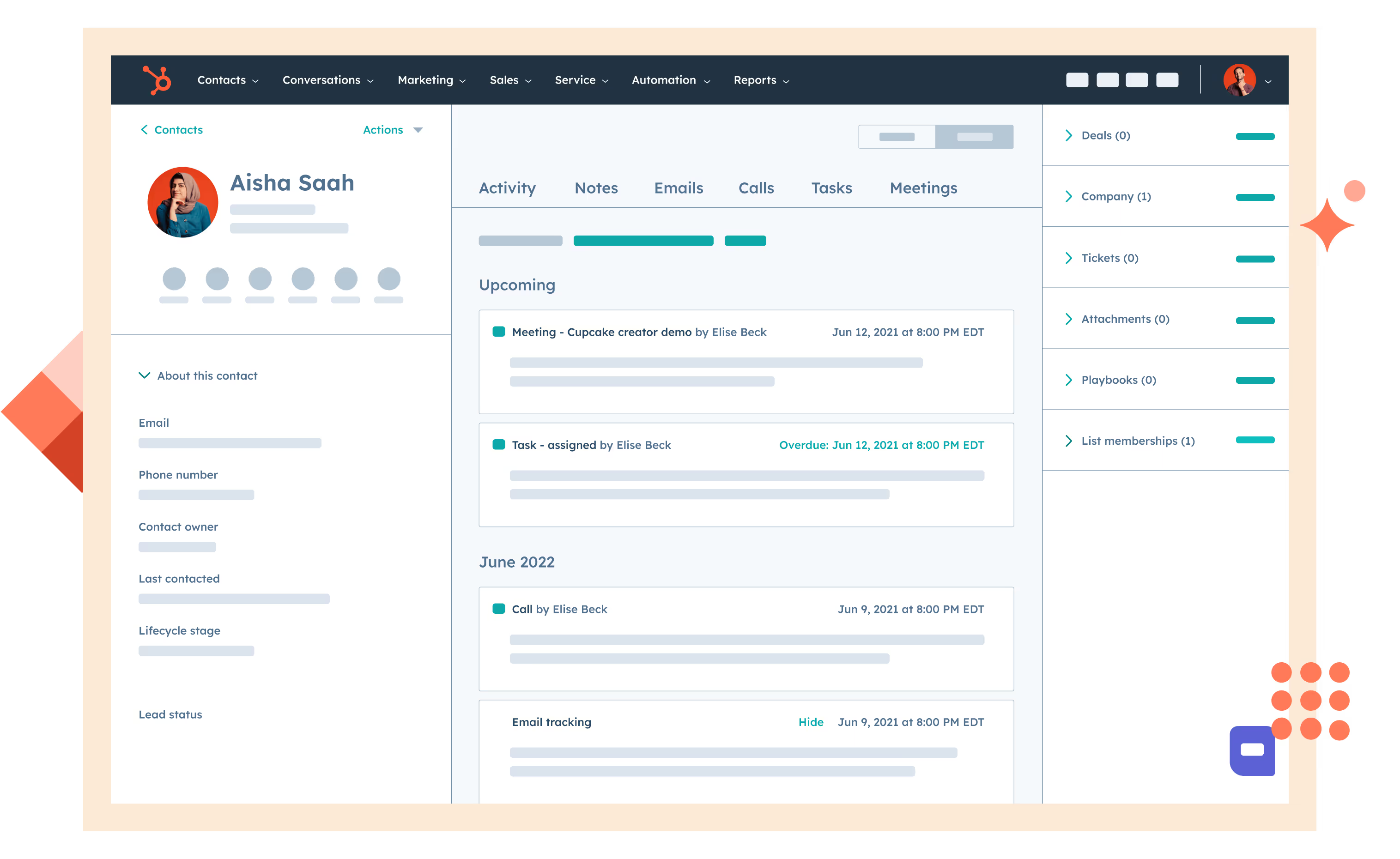Master Customer Lifecycle Management: Avoid Losing Customers
Master Customer Lifecycle Management: Avoid Losing Customers

The customer who ghosted you after that perfect sales call. The prospect who downloaded every whitepaper but never converted. The loyal buyer who suddenly switched to your competitor.
Each disappearing act tells a story – not of fickle customers, but of missing connections in your customer lifecycle management strategy.
Most businesses are trapped in a cycle of attract, convert, repeat – treating each customer interaction like a first date. Meanwhile, your competitors are building relationships that last decades. The difference? They've mastered the art of customer lifecycle management.
Five Essential Components of Effective Customer Lifecycle Management
1. Customer Segmentation That Predicts Needs
Generic audience segmentation puts customers in buckets. Effective segmentation, using advanced customer segmentation models, anticipates what they'll need next.
Smart retailers analyze purchase patterns to identify major life transitions without customers explicitly announcing them. When someone suddenly buys furniture polish, drawer organizers, and for-sale signs in the same month, they're likely preparing to sell their home.
An effective customer lifecycle management system recognizes these patterns and automatically shifts that customer into a "home transition" segment, delivering timely offers for moving services or new home essentials – often before the customer has told friends about their plans to move.
2. Communication That Feels Like Mind Reading
When a message arrives at exactly the right moment with exactly the right offer, it doesn't feel like marketing – it feels like magic.
Notion achieves this "mind reading" effect by tailoring communications based on language preferences and usage patterns, exemplifying effective personalized sales outreach. Their emails achieve 51% open rates because they arrive when users need guidance, not when the marketing calendar says it's time for another blast.
3. Feedback That Never Falls Into a Black Hole
You know the feeling – you take time to complete a survey, and your feedback vanishes into the void. True customer lifecycle management ensures every piece of feedback completes a circuit back to the customer who provided it by reverse-engineering the customer experience to understand pain points and opportunities.
The businesses that excel don't just capture feedback – they create closed loops where customers can see their input transforming your product in real-time. This turns survey-takers into stakeholders who feel ownership in your evolution.
4. Data That Talks Across Departments
In too many businesses, customer data resembles a middle school dance – marketing data stands awkwardly on one side of the room, sales data on another, and support data hides in the corner. Customer lifecycle management gets them all talking.
When your systems communicate seamlessly, a support ticket doesn't just resolve an issue – it informs marketing about content needs and alerts sales to expansion opportunities. The result? Customers who feel understood across every touchpoint.
5. Improvement Baked Into Your DNA
The businesses that excel at customer lifecycle management treat improvement like breathing – not a special initiative but something that happens continuously without conscious effort, integrating content personalization at every touchpoint.
They create loops where insights automatically influence actions, measuring results becomes instinctive, and necessary adjustments happen without committee approvals. This approach ensures your customer lifecycle management evolves as rapidly as customer expectations.
The Five Stages of Customer Lifecycle Management
Stage 1: Awareness – When Strangers Become Prospects
The awareness stage is where potential customers first discover your solution exists. But awareness without relevance is just noise. Leveraging AI lead generation techniques can help businesses identify and engage with the most promising prospects.
The most effective awareness strategies don't just capture attention – they capture the right attention:
- Create content that answers the questions your ideal customers are asking (not the ones you wish they were asking)
- Develop resources that establish expertise without the desperation of an obvious sales pitch
- Use targeted social campaigns that feel like a friend's recommendation, not an advertisement
Stage 2: Consideration – When Prospects Become Shoppers
During consideration, customers weigh options while battling internal objections. They're imagining futures with and without your solution.
To guide prospects through this critical stage:
- Provide proof through case studies featuring companies they recognize or challenges they share
- Create email sequences that answer questions before prospects need to ask
- Offer free trials designed to deliver early victories, not just showcase features
- Develop educational content that solves immediate problems while hinting at bigger possibilities
Technologies that help: CRM systems track interactions, marketing automation creates personalized journeys, and lead nurturing programs keep prospects engaged. AI tools can identify patterns that predict readiness to advance.
Stage 3: Conversion – When Shoppers Become Customers
The conversion stage is where intentions transform into actions. Every unnecessary step between decision and purchase increases the risk of abandonment.
Remove Friction Relentlessly
The best checkout processes feel like stepping onto an escalator – a single decision followed by effortless forward motion. Amazon's one-click ordering eliminated decision points that gave customers chances to reconsider.
Make Next Steps Unmistakable
Your calls-to-action should be as obvious as exit signs in a movie theater – unmissable guidance that leads precisely where customers want to go next.
Implement Retargeting That Feels Like Helpful Reminders
Effective retargeting doesn't chase abandoned carts like a desperate salesperson. It gently reminds customers of items they've shown interest in, ideally with new information that helps advance their decision.
Stage 4: Retention – When Customers Become Advocates
The retention stage is where the relationship deepens from transaction to partnership. Providing exceptional digital customer service ensures customers feel supported at every touchpoint.
According to research, companies that systematically analyze feedback to prevent churn see dramatically higher customer lifetime value – not through aggressive retention tactics but through genuine relationship building. Monitoring your customer retention rate is essential in this process.
Strategies That Build Lasting Relationships:
Implementing effective customer engagement strategies can transform customers into loyal advocates:
- Personalization That Evolves: Use customer data to refine recommendations as tastes and needs change
- Loyalty Programs With Actual Value: Design rewards that make customers feel appreciated, not manipulated into additional purchases. Consider building a customer loyalty program that offers creative incentives to keep customers coming back.
- Subscription Models That Eliminate Decisions: Convert one-time buyers into subscribers through convenience and consistent value
- Support That Anticipates Issues: Identify and solve problems before customers have to ask for help
- Education That Unlocks Product Value: Help customers discover capabilities they didn't know existed through contextual guidance
Stage 5: Advocacy – When Customers Become Your Marketing Department
The advocacy stage transforms satisfied customers into passionate champions. This transition occurs naturally when your product delivers unexpected value and your relationship feels like a partnership.
To cultivate authentic advocacy:
- Create Referral Programs That Feel Fair: Design systems where both advocates and new customers receive meaningful benefits
- Showcase Real Customer Stories: Feature genuine testimonials that highlight specific problems solved, not generic praise
- Build Communities Around Shared Interests: Create spaces where customers connect with each other, not just with your brand
- Recognize Genuine Engagement: Acknowledge customers who speak up for your brand without prompting
- Share Success Stories With Specifics: Highlight detailed examples showing measurable impacts, not vague claims
Building Your Customer Lifecycle Management Tech Stack

Effective customer lifecycle management requires tools that create a unified view of each customer's journey. Advanced AI in sales helps in anticipating customer needs and personalizing interactions. Similarly, AI-based call centers transform small businesses by automating routine customer interactions and enhancing the customer experience. Your technology should eliminate data silos while enabling personalized interactions at scale.
Essential Technologies to Consider:
- CRM Systems: Platforms like Salesforce and HubSpot CRM provide the foundation for tracking interactions
- Marketing Automation: Tools like MailChimp and ActiveCampaign orchestrate personalized communications
- Customer Success Platforms: Solutions such as Gainsight help predict and prevent churn
- AI and Analytics Tools: Technologies that uncover patterns humans might miss
Remember: Technology amplifies human relationships but can't replace them. Automate repetitive tasks while preserving human touchpoints where empathy and judgment matter most.
The Future of Customer Lifecycle Management
As technology evolves and expectations shift, customer lifecycle management continues its transformation. Forward-thinking businesses are already adapting to several emerging realities:
AI That Predicts Needs Before Customers Know Them
Advanced AI systems are now analyzing behavioral patterns to identify needs customers haven't yet recognized. Some hotel chains use these systems to anticipate guest preferences, creating experiences that feel remarkably personalized without requiring guests to articulate their desires.
Personalization That Protects Rather Than Invades
Tomorrow's customer lifecycle management will deliver hyper-personalized experiences while respecting increasingly stringent privacy boundaries. The leaders in this space will shift from collecting everything possible to gathering only what's necessary to create meaningful connections.
Seamless Experiences Across Physical and Digital Realms
The distinction between online and offline customer journeys is disappearing. Forward-thinking companies are creating experiences that flow naturally between physical locations, digital interfaces, and virtual environments without forcing customers to "start over" as they move between channels.
Turning Philosophy Into Practice
Every touchpoint shapes your customer's journey, but that first conversation often determines if there will be a second one. This is where The AI Receptionist from Smith.ai becomes the cornerstone of effective customer lifecycle management. Capturing those critical first moments when interest is fresh and expectations are forming.
Like a skilled conductor who knows exactly when each instrument should enter, the AI Receptionist ensures no opportunity slips through the cracks, qualifying leads, scheduling appointments, and creating those personalized first impressions that transform curious browsers into committed customers.
The businesses that master customer lifecycle management understand this truth: the journey from stranger to advocate begins with a conversation that feels surprisingly human – even when technology helps make it possible. Ready to make your customer lifecycle management seamless from the very first hello? Get started with Smith.ai today and watch as single conversations grow into relationships that last for years.
Take the faster path to growth. Get Smith.ai today.
Key Areas to Explore
Technical Implementation Terms
Voice user interface (VUl) design
Speech recognition integration
Text-to-speech optimization
API connectivity and webhooks
Real-time data synchronization

Your submission has been received!














.svg)



